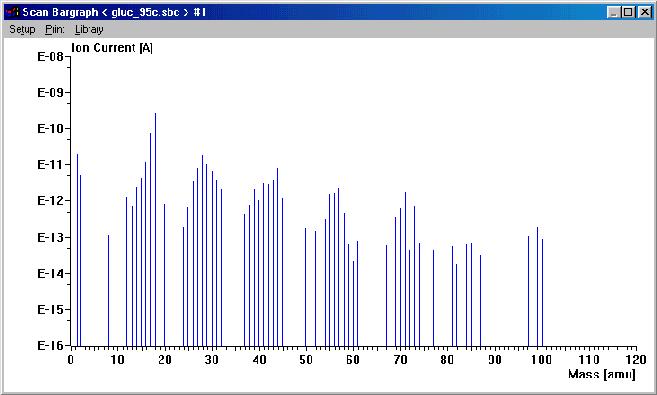
The glue showed the richest emission of all probes, but a further measurement will be necessary.
| Components with strong outgassing |
| Line [amu] | Fragment ions |
| 24 | C2+ |
| 25 | C2H+ ? |
| 30 | C2H6+ |
| 31 | CF+, C2H5OH+ |
| 36 | H35Cl+ |
| 37 | 37Cl+, C3H+ |
| 38 | H37Cl+, C3H2+ |
| 45 | (alcohol) |
| 50 | CF2+ |
| 51 | (not identificable) |
| 53 | C4H5+ ? |
| 54 | C4H6+ ? |
| 55 | C4H7+ |
| 56 | C4H8+ ? |
| 57 | C4H9+ |
| 58 | (acetone) |
| 59 | (not identificable) |
| 60 | (not identificable) |
| 61 | (not identificable) |
| 67 | C5H7+ ? |
| 68 | C5H8+ ? |
| 69 | CF3+ |
| 70 | C5H10+ ? |
| 71 | (not identificable) |
| 72 | (not identificable) |
| 73 | (not identificable) |
| 74 | (not identificable) |
| 77 | (Phenyl) |
| 81 | (not identificable) |
| 82 | C6H10+ ? |
| 83 | (not identificable) |
| 84 | C6H12+ ? |
| 85 | (Freon) |
| 87 | (Freon) |
| 97 | (not identificable) |
| 84 | C7H14+ ? |
| 99 | (not identificable) |
| 100 | (not identificable) |
 The glue showed the richest emission of all probes, but a further measurement will be necessary. |
Unfortunately, we found that the glue had not been properly stirred up, which might have favored further outgassing before it became solid. For a comparison, this measurement will have to be repeated with another probe of this glue.
| Send comments to
<odt@eso.org>
Last update: Mar 15, 2004 Webdesign by EVI |
|